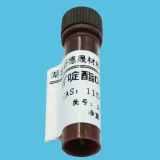Chinese VersionChina Suppliers > Hubei new DE sheng material science and technology co., LTD. > Acridine ester DMAE-NHS
- Search Product
-
-
- Region :China/Hubei
- Tel : +86-18971041571
- Fax :
- Email :vickyzhao@whdschem.com
- URL :
- Add :Guanggu United Science and Technology City C8, Ezhou City, Hubei Province
- Details for Acridine ester DMAE-NHS
-
Acridine ester DMAE-NHS
Category : Others

CAS NO : 115853-74-2 EC NO : MF : MW : Specification : Yellow Powder Packing : 10g/bottle Product description : Acridine ester DMAE-NHS is a solid powder, usually yellow in color, that dissolves well in dry organic solvents such as dimethyl sulfoxide (DMSO) and dimethyl formamide (DMF). It belongs to acridine ester compounds and has direct luminescence properties. Its direct luminescence mechanism is that under the action of excitation, the acridine ester DMAE-NHS molecule undergoes a transition from the excited state to the ground state, resulting in luminescence. This direct luminescence characteristic makes it an excellent chemiluminescent reagent suitable for analyzing the presence and content of biological molecules. As a chemiluminescent reagent, it has a wide range of applications in biomedical research, capable of reacting with amino groups in biological molecules such as proteins, antibodies, and oligonucleotides to achieve conjugated labeling. By conjugating with target biomolecules, chemiluminescence technology can be used to detect and quantitatively analyze them, thereby achieving research and analysis of biomolecules. Acridine ester DMAE-NHS has many advantages as a chemiluminescence reagent, such as direct luminescence characteristics, high sensitivity, and wide detection range. In addition, it can also react with amino groups in various biological molecules, achieving diverse labeling and detection. However, it also has some limitations, such as the possibility of background interference in some complex biological systems, which require optimization and control based on specific experimental conditions. Acridine ester DMAE-NHS, as an important chemiluminescence reagent, has direct luminescence properties and is suitable for labeling and detecting biomolecules in biomedical research. Its chemical properties are stable and easy to operate, providing a powerful tool for biochemical experiments and biomedical research. Uses : Chemiluminescence reagent Synonyms : no data
- more>>Other Products
-
- • Biological buffer 3- [N, N-di (hydroxyethyl) amino] -2-hydroxypropanesulfonic acid DIPSO
- • Luminol Sodium Salt
- • 4-Aminophthalhydrazide
- • acridinium ester DMAE-NHS
- • acridinium ester NSP-DMAE-NHS
- • Acridine hydrochloride NSP-SA
- • Acridine hydrochloride NSP-SA-NHS
- • NSP-SA-ADH
- • acridinium ester ME-DMAE-NHS TOOS; 3-(N-Ethyl-3-Methylanilino)-2-Hydroxypropanesulfonic Acid Sodium Salt
- • TOPS; Sodium 3-(N-Ethyl-3-Methylanilino)Propanesulfonate; N-Ethyl-N-Sulfopropyl-M-Toluidine Sodium Salt
- • ADOS Sodium 3-(Ethyl(3-Methoxyphenyl)Amino)-2-Hydroxypropane-1-Sulfonate Dihydrate
- • ADPS N-Ethyl-N-(3-Sulfopropyl)-3-Methoxyaniline Sodium Salt
- • ALPS N-Ethyl-N-(3-Sulfopropyl)Aniline Sodium Salt; Sodium 3-(Ethyl(Phenyl)Amino)Propane-1-Sulfonate; Sodium
- • DAOS; Sodium 3-((3,5-Dimethoxyphenyl)(Ethyl)Amino)-2-Hydroxypropane-1-Sulfonate
- • HDAOS; N-(2-Hydroxy-3-Sulfopropyl)-3,5-Dimethoxyaniline Sodium Salt
- • MADB N,N-Bis(4-Sulfobutyl)-3,5-Dimethylaniline Disodium Salt
- • MAOS N-Ethyl-N-(2-Hydroxy-3-Sulfopropyl)-3,5-Dimethylaniline Sodium Salt Monohydrate
- • DAB 3,3',4,4'-Biphenyltetramine Tetrahydrochloride